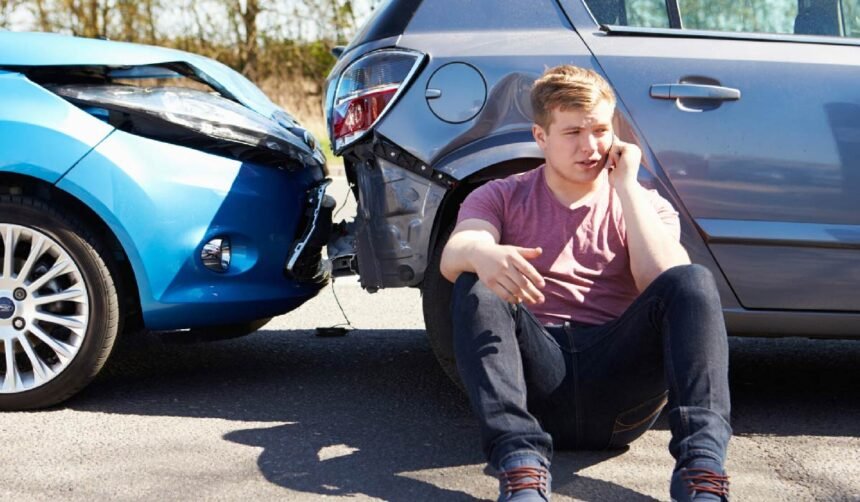It’s surprising how many accidents happen in car parks. You might think that with the low speeds and confined spaces, the risks would be minimal. Yet, small bumps and collisions are far from rare. And when they happen, people often find themselves wondering the same thing: who’s actually to blame?
Let’s take a look at how the law decides fault when something goes wrong in a car park and what you can do if you’ve been injured or your car’s been damaged.
Why So Many Car Park Accidents Happen
Car parks are awkward places to drive. Tight turns, blind spots, pedestrians with shopping bags, and drivers rushing to find a space all create the perfect mix for minor mishaps.
The most common causes include:
- Drivers reversing without checking behind them
- Pulling out of a space too quickly
- Ignoring directional arrows or pedestrian crossings
- Poor visibility or lighting
- Slippery or uneven surfaces
Even though most collisions happen at low speeds, they can still lead to injuries like whiplash or cause hundreds of pounds’ worth of damage.
The Duty of Care Explained
Everyone in a car park has what’s called a duty of care. It simply means taking reasonable steps to avoid causing harm to others.
- Drivers must check their mirrors, look behind before reversing and follow the one-way system or arrows.
- Pedestrians are expected to keep an eye out for moving vehicles and use safe routes where possible.
- Car park owners or operators need to keep the area well maintained, fix potholes, ensure proper lighting, and make sure signage is clear.
If someone fails to take reasonable care, they could be held responsible for the accident. This guide to car park accident compensation claims provides an excellent explanation of duty of care and how a personal injury solicitor can help you.
When Another Driver Is at Fault
In most cases, another driver is to blame. Maybe they backed into your vehicle while reversing or didn’t notice you when pulling out of a space. If their driving caused the collision, you can usually claim against their insurance.
It’s important to collect as much evidence as you can at the scene. Photographs of both vehicles, the layout of the car park, and contact details of witnesses can make all the difference later on.
When the Car Park Owner Could Be Liable
Sometimes, no other driver is involved at all. You might trip over a pothole, skid on oil that hasn’t been cleaned up, or hit a bollard that wasn’t clearly visible in poor lighting.
In these situations, the fault could lie with whoever manages or owns the car park. Under the Occupiers’ Liability Act 1957, they must take reasonable steps to keep the premises safe for visitors. Failing to do that can make them legally responsible for any injuries.
When Both Parties Share the Blame
Not every case is clear-cut. If both drivers contributed to the crash — for example, if you and another car were reversing at the same time — liability might be shared.
This is known as contributory negligence. Each party takes a portion of the blame, and any compensation is adjusted accordingly. So, if you’re found to be 30% responsible, you would receive 70% of the total amount awarded.
What To Do Straight After an Accident
What you do in the minutes after a car park accident can have a big impact on how smoothly things go later. Try to follow these steps:
- Check for injuries and seek medical help if you’re hurt. Some injuries, like post-traumatic stress disorder (PTSD), may not show until a few days or weeks after the accident.
- Swap details with the other driver, including insurance information.
- Take photos of the vehicles, damage, and the wider scene.
- Look for CCTV or ask if the car park has security footage.
- Report it to the police if anyone’s injured or there’s significant damage.
- Speak to a solicitor for advice before dealing with insurers.
Making a Car Park Accident Claim
If you were injured and the accident wasn’t your fault, you might be able to make a claim for compensation. This could include:
- Pain and suffering
- Lost earnings if you’ve had to take time off work
- The cost of repairs or replacement for your vehicle
- Medical treatment and travel expenses
Most people choose to work with a No Win No Fee solicitor, which means you don’t pay legal fees upfront. They’ll handle the paperwork, gather evidence, and negotiate with the insurer for a fair settlement.
How Long You Have to Claim
In most cases, you have up to three years from the date of the accident to start a personal injury claim. However, there are exceptions for children and people who lack mental capacity. It’s usually best to get advice early so evidence can be collected while it’s still fresh.
The Bottom Line
Car park accidents might seem straightforward, but working out who’s liable often isn’t. The key question is always who failed to take reasonable care. Sometimes that’s another driver, sometimes the car park owner, and occasionally both.
If you’ve been injured in a car park and want to know whether you can claim, you can read more about car park accident claims and get free legal guidance from experienced solicitors.








